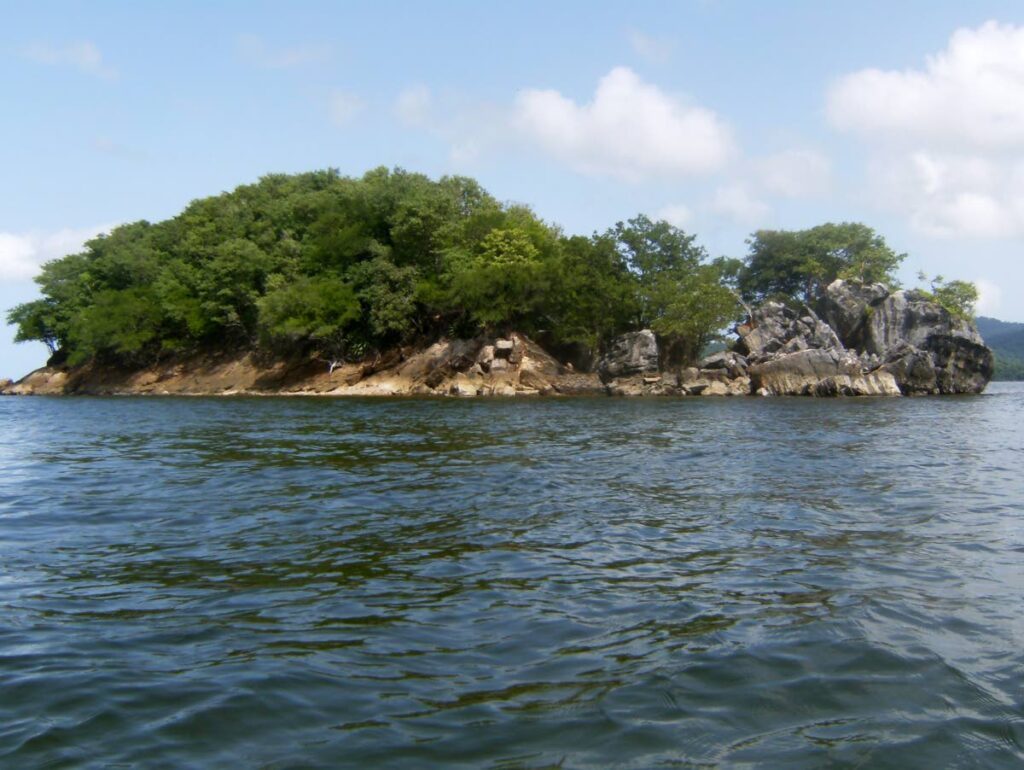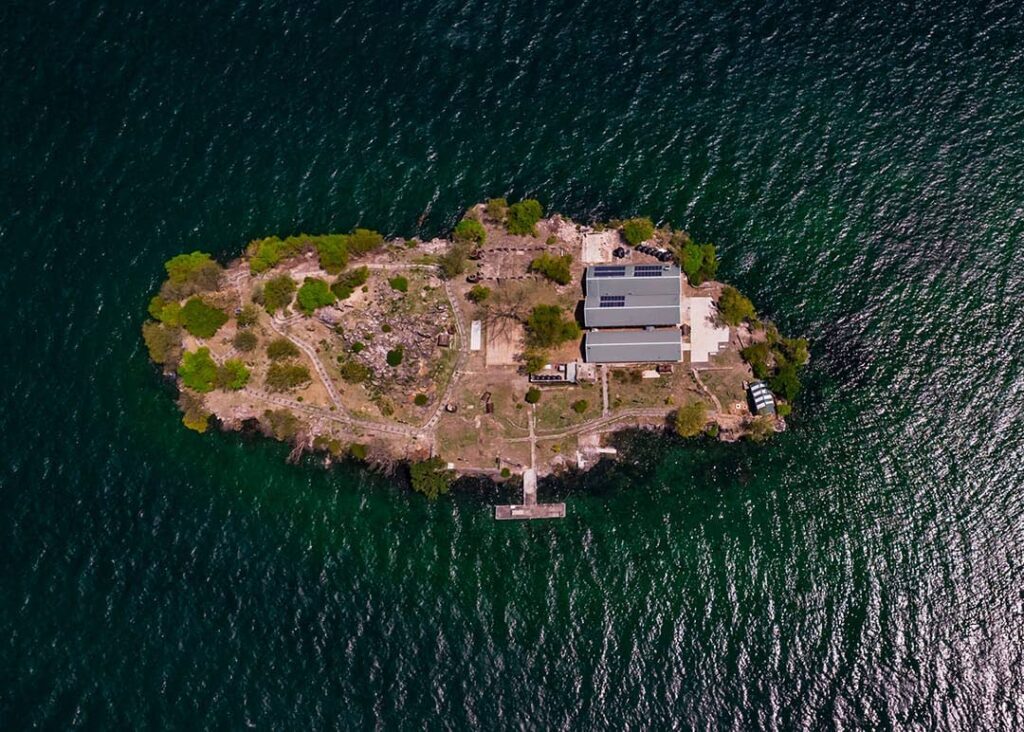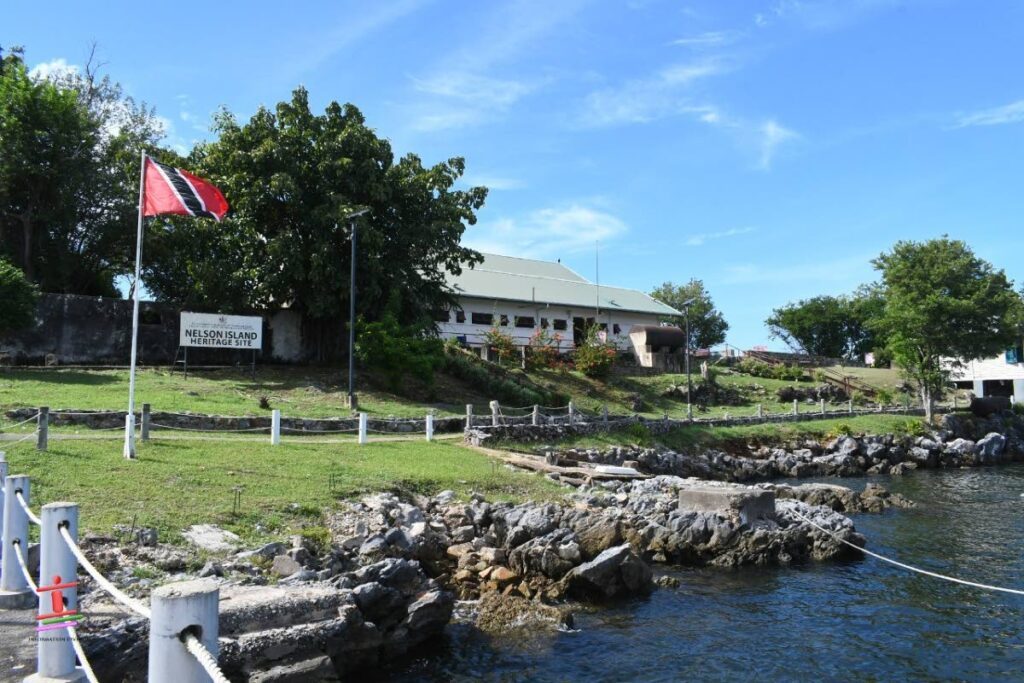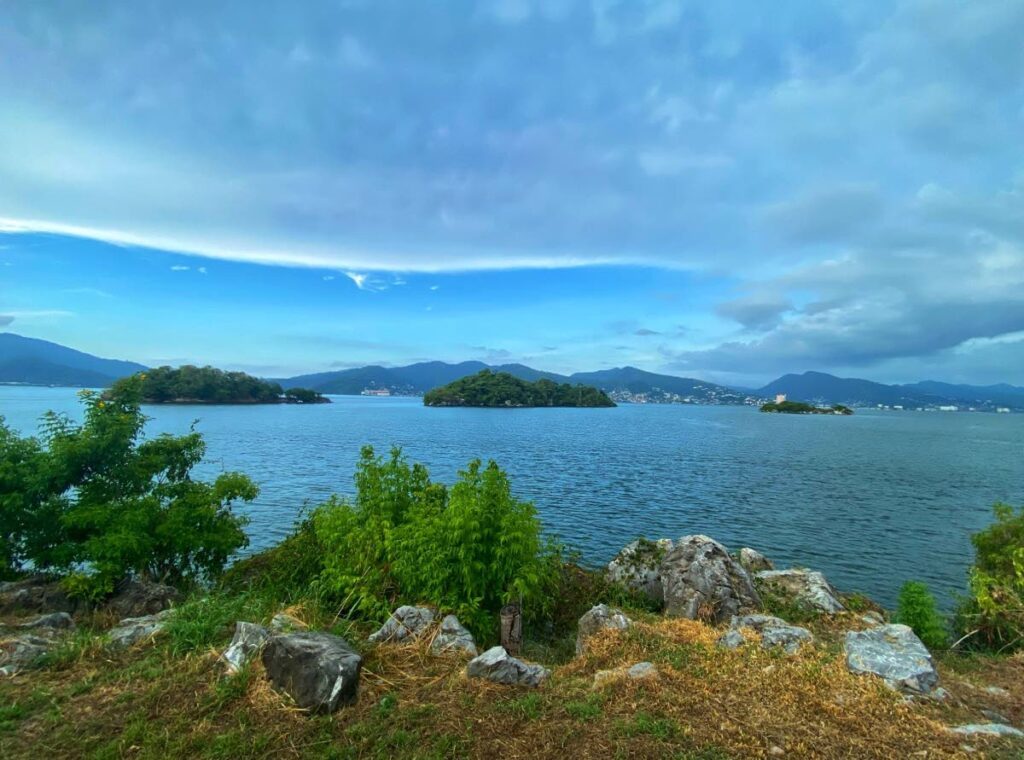Hidden gems – Five Islands

Kami Allong and Alexandra Gray
Welcome to the third instalment of our Hidden Gems series, where we shall embark on a journey to share the secrets of TT's archipelago.
From the rugged coast of Soldado Rock to the pristine coral reefs of Little Tobago, these hidden gems offer a glimpse into a world untouched by urbanisation.
Through exploration and discovery, we seek to shed light on the geological wonders, ecological marvels and unique histories that define these remote outposts.
Join us as we dive into the depths of TT's archipelago, beyond the beaten path and into the heart of its lesser-known lands – where every island tells a story waiting to be heard.
Five Islands
We shouldn’t let this name fool us, as there are in fact six little sisters in this grouping, including Caledonia Island, Craig Island, Lenegan Island, Nelson Island, Pelican Island and Rock Island.
The isles are within a few kilometres of the northwest peninsula of Trinidad. Their earliest occupants were the Waroa and Nepuyo tribes of Trinidad’s First Peoples, as stops for bartering during their fishing voyages.

Photo courtesy GSTT -
On the arrival of the conquistadors in 1498, they became known as Los Cotorros (the Spanish term for parrots), which we can only imagine was given to them due to the beautiful, winged residents that still inhabit our shores today.
After Trinidad came under British rule, the five sisters became the quarantine islands, and were largely used as isolation zones for incoming passengers who had contracted infectious diseases during their voyages.
It should be noted that this information was derived largely from the National Trust’s website, as these isles are currently maintained under its care and protection as national heritage sites.
Caledonia and Craig Islands
Caledonia and Craig Islands, currently connected by a man-made causeway, are the largest and smallest of the isles respectively.
The causeway was built after the erosion of an isthmus that previously joined the two. The fact that they had such a connection, both geologically and historically, gives us an understanding as to why this grouping is known as five rather than six islands. Together they were known as Marlin Spike Hall, held initially by the Scottish Lt Herbert Mackworth and later by another Scot, Caldwell, who christened the larger isle in his name.
Marlin Spike served as a resort for civil servants from the 1800s and onwards. The islands were dubbed the "honeymoon isles" after the post-nuptial getaway of Lord Harris (governor of Trinidad from 1846- 1854) and his wife.
Caledonia continued its tradition of matrimony by hosting wedding ceremonies. The facility held many over time in the subsequent decades, the most famous of which was the intimate wedding ceremony between Dr Eric Williams and his third wife, Mayleen Mook Sang.

Though major reconstruction had been done in 1890, over time the habitations (including the permanent residences of the medical officer and the official caretaker on the smaller Craig Island) fell into dilapidation and have since been abandoned as the current owner and the government have not sourced funds for its repair.
Pelican Island
The first owner of Pelican was C Hobson, who sold the property to the Revell family in 1866.
Another mini-island getaway away from the hustle and bustle of 1900s Port of Spain, Pelican Island was to the upper echelon of society what Marlin Spike was to the civil servants in the capital.
The fourth largest of the Los Cotorros, it also served its small purpose in a World War II-torn society as a degaussing station for the US Navy, the remnants of which still litter the island, well after the concrete structures were abandoned.
Rock Island
TF Johnson was granted ownership of Rock Island then a Dr Mercer, and after that Thomas Laughlin.
It was previously a quarantine depot for first-class passengers. A yellow flag acted as a signal of the presence of any infected visitors to deter unnecessary personnel from approaching.
Lenagan Island
Louis Lenagan was an Irishman who sailed to Trinidad to enlist in the government in the early 1800s. By the 1820s he had solidified a position in the Cabildo and was responsible for running and maintaining the wharf in Port of Spain.
The Lenagan ownership followed the chain of inheritance, then fell back into the government’s hands after his son’s death, and it was converted into another quarantine facility, in keeping with the common purpose of the other islands.
After the official establishment of the Nelson Island quarantine zone for East Indian indentured labourers, Lenagan became the official treatment facility for those carrying infectious diseases from their journey across the world. A cremation platform for those who died of their illnesses was built in the west of the island but is no longer visible in the present day, likely having been lost to the elements, and its remnants somewhere on the seafloor.
Nelson Island
Perhaps the most famous of the Five Islands, Nelson Island remains to this day a monumental location in the history of TT.
The facilities housed on Nelson (once known as Stephonson’s Island) are some of the oldest of continuous occupation in the country and the first buildings there were erected by the King’s Slaves, a group of particularly skilled enslaved Africans, as early as 1802.
It gained its current name from its past owner, Dr Neilson, whose ownership was revoked before the next phase in its famous story.

Map courtesy GSTT -
After the emancipation and apprenticeship of the enslaved population, the insurgence of indentureship occurred in the mid- to late 1800s.
Between 1866 and 1917, indentured Indian labourers landed and were processed on the Five Islands, with 114,000 such immigrants passing through Nelson Island.
Beyond this metaphorical gateway, these labourers then made their way onto the mainland and were assigned to the cash crop estates across the island. Some settled permanently after their contractual service and those who wanted to make the return journey to their homeland in the Indian subcontinent returned to Nelson Island to assemble and be repatriated until 1936.
Like Caledonia and Craig Islands, Nelson Island is tied to another TT historical figure, but his story here is perhaps not as joyous as the honeymoon getaways or intimate weddings of Caledonia.
Tubal Uriah "Buzz" Butler, the renowned labour leader of the early 20th century, spent two consecutive sentences on Nelson, on charges of treason and sedition, from 1936-1945, the last six years during World War II.
During this period, detainees ranging from Austrian and German Jewish refugees to Carrera inmates, along with Butler, were part of a contingent under the US Navy charged with installing a gun emplacement and cable causeway to Rock Island, which is the closest neighbour of Nelson. Throughout the global conflict, this station served as an offshore outpost of the US military base in Chaguaramas.

In a post-war world, however, the purpose of Nelson Island evolved once more and the isle became a hub of youth development in the 1960s and beyond that, a place of advanced learning through fieldwork conducted by marine biology students from the UWI, St Augustine campus.
Nevertheless, its history of incarceration continued, for in the early 1970s, with the arrival of the Black Power and civil rights movement, a total of 50 insurgents were held on the island during the state of emergency. Similarly, insurgents associated with the attempted coup by the Jamaat al Muslimeen in 1990 were carded to be held at the facility and necessary accommodation had been made for them. However, after the return to political stability, no convictions were imposed and so the renovated facilities were never occupied.
This article was submitted by the Geological Society of Trinidad and Tobago (GSTT).

Comments
"Hidden gems – Five Islands"